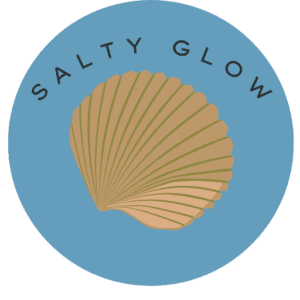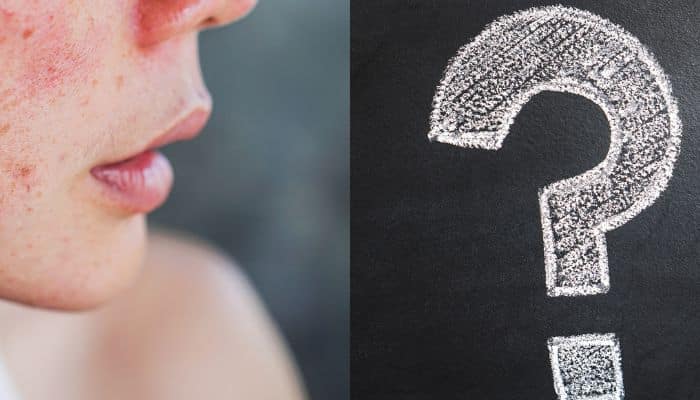It’s easy to forget that your skin is your body’s largest organ — until something goes awry. Skin rashes can cause itching, burning, pain and considerable psychological distress. What does the redness mean and should you worry about it?
Most rashes are benign and temporary, clearing up in a few hours or days without leaving lasting scars. However, others deserve closer attention and medical intervention.
What should you do if you notice a strange new bump or blotch? Here’s what your rash means and when you should worry.
When to Worry About a Rash
While you shouldn’t worry about most rashes, some circumstances should alert you to seek medical attention. Knowing what signs deserve a call to the doctor is the first part of the battle. Seek help if:
- The rash becomes widespread: Rashes that cover large areas, even head to toe, are often signs of an allergic reaction or infection.
- The rash blisters
- The rash appears around your eyes, nose and throat or genitals
- You develop signs of infection: You experience symptoms like green or yellow discharge, crusting, pain, warmth or red streaks on your skin.
- You have other symptoms: Rashes accompanying fever deserve attention, as do those that appear with symptoms of the common cold or flu.
- The rash comes on suddenly and spreads rapidly: This can signify a severe allergic reaction that requires immediate attention, or anaphylaxis could result.
- The rash is painful: Many rashes cause mild discomfort, but one that interferes with your daily activities warrants medical attention.
What Usually Causes Skin Rashes?
A rash is inflammation of the skin. One of your skin’s primary functions is to serve as a protective barrier against the outside world, taking the brunt of environmental forces so that your organs don’t have to. Rashes typically occur from things it touches, like cosmetics and cleaning products. That’s why most rashes are localized and clear up quickly — it’s simply your body saying, “We don’t like this substance and will launch troops against it.”
However, skin rashes can also indicate a severe underlying infection or disease. For example, monkeypox causes a skin rash that looks like a pus-filled pimple, with other symptoms like headache, fever, muscle aches and back pain. These pustules often appear around the anus and genitals and cause other signs, warranting medical attention. Seeking early help can prevent the spread of the disease.
Can a Rash Be Infectious?
Other skin rashes can also be infectious. For example, you should worry about a rash that first appears on the face and upper torso but spreads to other parts of the body, as it may indicate chickenpox. This bane of childhood introduces the same virus that causes shingles into your body, meaning you may be in for more painful rashes as an adult.
Learn more about other infectious skin rashes you should worry about if symptoms arise.
1. Ringworm
Surprise — you’ve had this condition if you’ve had athlete’s foot. It’s a fungus that thrives in damp, warm places on the human body, like the sweaty gap between your toes, although it can appear elsewhere.
2. MRSA
You should worry about this rash because many antibiotics can’t touch it. Although oregano oil shows promise, there is no prescribed treatment regimen to date. Your best prevention regimen is to wash your hands frequently and avoid sharing razors and other personal grooming devices.
3. Folliculitis
Here’s one reason to wipe down your gym equipment after you use it. This rash spreads through contact with an infected person’s fluids — even a dirty hot tub can do it. Fortunately, it isn’t dangerous, but you should seek medical care if it doesn’t clear up on its own.
4. Cold Sores
Cold sores stem from the herpes type 1 virus. Antiviral creams can help, but you may have repeated outbreaks. Don’t feel bad or “dirty” if you contract it — anywhere from 50%-80% of adults harbor the bug.
5. Scabies
This skin rash results from the human itch mite. Treatment can take up to four weeks, and you may have to repeat the regimen as necessary.
Other Rashes and What They Can Mean
Some skin rashes aren’t infectious but can still cause considerable irritation and distress. Here are some common types you should know about in case you or anyone you love develops them:
- Insect bites: These can be life-threatening but generally simply annoying. For example, people with bee allergies might need to carry an EpiPen. Bedbugs can make sleeping a misery and be challenging to eradicate.
- Rosacea: This facial skin rash can look like ruddiness or acne but deserves medical attention if it causes swollen eyes or nasal passages. It typically flares up occasionally and affects fair-skinned people the most.
- Eczema: This condition results from an immune system imbalance and causes dryness, itching, inflamed red, purple or ashy gray skin and scaly patches.
- Psoriasis: This disease causes patchy rashes that vary from dandruff-like flakes to painful plaques that may bleed. The autoimmune form of the illness often flares up in cycles — you’ll have symptom-free periods followed by breakouts and symptoms.
- Lupus: Lupus is an autoimmune disease that sometimes causes a butterfly-shaped rash across the nose and cheeks.
- Shingles: A painful flare-up of the chickenpox virus. You can reduce your risks through vaccination.
- Cellulitis: This condition can be life-threatening, so seek medical care without delay. It consists of a painful bacterial skin infection that is warm to the touch, usually occurring on the lower extremities, although it can appear anywhere on the body. It can spread to the lymphatic system and bloodstream.
- Contact dermatitis: A catchall term for the allergic reaction your skin produces when it touches an objectionable substance. Common culprits are poison ivy, oak and sumac, certain detergents, soaps, cleansers and fragrances.
Treating Most Common Rashes
If your rash doesn’t warrant medical attention, you can use DIY folk remedies for relief. For example, people have long used apple cider vinegar or baking soda paste to calm the itching associated with poison ivy — calamine lotion is another popular OTC treatment.
Most skin rashes clear up within a few hours to a week or two. Rashes that fade but recur deserve a conversation with your doctor. You could have underlying immune system dysfunction or an undiagnosed allergy — the right treatment could cause less frequent and severe outbreaks.
When to Worry About a Rash
Most skin rashes aren’t cause for worry. However, they can indicate an infectious disease or an allergy you should address. Knowing when to seek care is half the battle.
Understanding the types of skin rashes you might experience helps you decide whether to seek care. It also arms you with the knowledge to find answers and get help and relief.
Writer Bio

Beth is the Managing Editor and content manager at Body+Mind. She shares knowledge on a variety of topics related to nutrition, healthy living, and anything food-related. In her spare time, Beth enjoys trying out new fitness trends and recipes.




